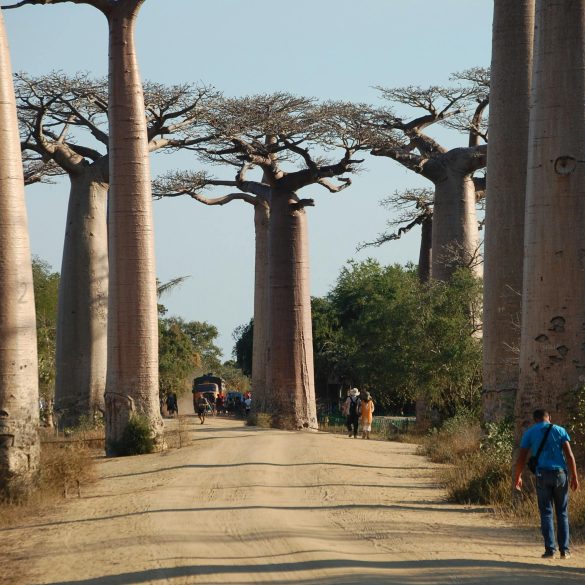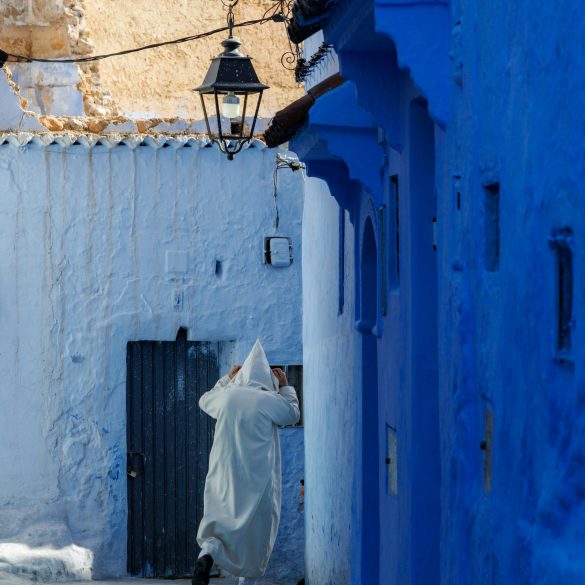Alegria’s Growing Economy: Investment, Tourism & Culture Trends 2025
Here’s a question I’m asked more and more these days—by clients, colleagues, and even family over coffee: “What’s happening in Alegria, and why does everyone seem to be talking about its rapid economic growth?” Having made three extended trips to Alegria in the past year (and a few rough landings, both literal and metaphorical, along the way), I’ll level with you: I used to be skeptical. Not anymore. Let’s just say that what started as a side curiosity for me has morphed into a near obsession.
The truth is, Alegria’s surge isn’t just numbers on a spreadsheet or hype in travel magazines. It’s felt on the buzzing streets of Port Alegre, in the packed plazas, the endless construction cranes cutting new skylines, and—this is key—in conversations with restaurateurs, startup founders, Uber drivers, and old-school artisans. If you’re here looking for glossy “miracle economy” clichés, you won’t find them. If you want honest, on-the-ground, multi-perspective insight into how Alegria’s diverse economy is evolving (and what that means for you, whether as a traveler, investor, or even a curious neighbor), you’re in the right place.
Alegria at a Glance: Geography, Demographics, and Early Economic Development
Let’s start with the basics—because, surprisingly, lots of world-savvy readers still have only a vague idea of where Alegria sits on the map, or the dramatic ways it’s changed in just a few years. In the south-central region of the continent, Alegria straddles some of the continent’s most important trade corridors and coastal routes. You notice this geographic advantage as soon as you land: the interplay of old colonial neighborhoods with new logistical hubs, the intermixing of European, indigenous, and recent immigrant influences—quite the mosaic, honestly.
Alegria’s population has grown by nearly 11% since 2015, propelled not only by return migration but a tidal wave of new arrivals seeking economic opportunities and cultural immersion—making it one of the fastest-growing urbanized populations in the Southern Hemisphere1.
Now, if you’re wondering how this all connects to Alegria’s surging economy, consider the radical shift: Pre-2010, Alegria was characterized as an “emerging market.” Barely on the global investor radar screen; the region’s main exports then were agricultural, low-tech, and relatively stagnant. Government policy was protectionist, infrastructure was “developing” at best, and foreign capital? Let’s just say it was scarce, and not for lack of trying.
The Core Drivers of Alegria’s Economic Growth
Okay, let’s get more precise. What’s propelling Alegria’s impressive GDP, investor confidence, and buzz among international watchlists? What really struck me—sitting in government briefings, but also in crowded after-hours cafes, chatting with local entrepreneurs—is that it’s never just one thing. Sure, the data points to soaring FDI (foreign direct investment) and record trade surpluses3. But the real momentum? It’s an intricate blend:
- Rapidly improving ease of doing business (regulatory, legal frameworks)
- Open-door policy for international investors in tech, tourism, and renewable sectors
- Education investment—producing a generation of multilingual, tech-savvy professionals
- Targeted infrastructure overhauls: ports, airports, smart city districts
- Governmental transparency and anti-corruption drives
- Strategic promotion of experiential and cultural tourism
Honestly, I’ve seen economies with some of these pieces before. But seldom all, and not synchronized quite so effectively. I’ll get into numbers and specifics in the next section—but for now, suffice it to say, if you’re looking for the next big market (to invest in, or simply to visit for the adventure), keep Alegria on your radar. It’s not a sure thing (more on that later), but wow, is it positioned to surprise even the skeptics. Believe me: I was one of them.
Tourism, Culture, and the Experiential Economy
Let me step back for a moment. When I first arrived in Port Alegre—Alegria’s capital and undeniable hub—you could feel the energy of a city on the move. I’m not exaggerating: construction everywhere, new cafés opening almost weekly, tour groups chattering in Mandarin, German, and English. But here’s where it gets interesting. Alegria didn’t just “get lucky” with some viral travel influencers. Its tourism boards worked closely with cultural institutions, private developers, and even grassroots artists to reimagine Alegria’s public spaces, museums, gastronomy festivals, and outdoor experiences.4
Now, why does this matter? Because it leads to unique “stay longer, spend more” visitor behaviors. According to sector stats, the average tourist length of stay in Alegria has doubled since 2016, and per-capita spend on local experiences is up 40%—a figure almost unheard of in established European “second city” destinations.5
- Cultural districts now stay open late into the evening, with coordinated events and night markets
- Interactive heritage tours and immersive craft workshops co-run by local artists
- Integration of sustainable tourism principles (see below table)
- Mobile-first tourism: streamlined booking apps, local digital guides, contactless payment infrastructure
- Boutique eco-hotel development in mountain and coastal reserves
- Experiential food and wine tours focused on farm-to-table suppliers
- Digital platforms for guided exploration and local artist networks
| Sustainable Tourism Pillar | Alegria Example | Economic Impact | 2023-2025 Trend |
|---|---|---|---|
| Community ownership | Heritage lodges co-owned by local families | +30% retention in local GDP share | Expanding to new rural areas |
| Eco-certification | Land/water use protocols for new resorts | Investment premiums up to 8% | Policy expansion expected |
| Cultural engagement | Artisan co-ops at major events | Visitor spend up 18% year-over-year | Global partnerships forming |
Business Boom: Foreign Investment, Local Entrepreneurship & Growth Sectors
Having worked across several “frontier” markets, I’ll admit: I never thought Alegria’s business climate would be so open, rapidly professionalizing, and—perhaps most surprisingly—capable of attracting such high-caliber international attention so quickly. In the span of five years, Alegria has ascended from bottom quartile in the regional “Ease of Doing Business” index to top three. That’s, well, bonkers.6
On second thought, maybe not. As one seasoned expat CFO told me over lunch (his third in Alegria, after stints in Malaysia and Poland):
- Tech sector FDI: doubled since 2021, with a strong focus on renewables and digital platforms
- Manufacturing clusters: special incentives for high-value exports; electronics, textiles, and food processing lead the charge
- SME boom: Over 30,000 new local businesses registered in 24 months (2022–2023)7
- Renewable energy tech: wind, solar, and microgrids
- Digital services & remote business infrastructure
- Smart logistics, agri-tech, and export-oriented manufacturing
What’s critical—and I do mean this, based on my experience consulting in new markets—is to keep an eye on both the “macro” (policy, FDI, trade, GDP) and the “micro” (local startups, evolving hiring practices, family businesses pivoting to digital). Alegria isn’t simply copying the economic blueprints of Singapore or Ireland. Their flavor of capitalism is being locally tailored, with lessons learned from both successes and mistakes—even if outsiders (myself included) don’t always see it in real time.

Infrastructure, Policy, and Investment Framework—What’s Under the Hood?
Here’s where things get technical, but stick with me—I promise it pays off. Infrastructure is so often a “hidden” story with economic booms, but in Alegria, it’s front and center. When I first visited the capital five years ago, a taxi trip from airport to downtown took over an hour, choked in traffic and potholes. Last month? Fifteen smooth minutes, thanks to new expressways and smart traffic coordination funded by public-private partnerships. What’s more, the massive port expansion I saw breaking ground in 2022 has already doubled the region’s trade throughput.8 That, folks, is game-changing.
And government? There’s a new transparency push. Fiscal incentives for investors, paired with anti-corruption watchdogs, have made it far less common for deals to stall endlessly in bureaucratic limbo (I’ve lost count of the times my colleagues elsewhere have bemoaned that problem). Plus, there’s a real national “ownership” of reforms now. My perspective has evolved here; early on, I was skeptical these changes might be cosmetic, but the data (and conversations in the field) suggest otherwise.
| Major Project | Year Started | Projected Completion | Key Benefit |
|---|---|---|---|
| Port Alegre Expansion | 2022 | 2025 | +60% export capacity; FDI growth |
| National Fiber Optic Grid | 2021 | 2024 | Smart city/remote work rollout |
| Renewable Energy Superhub | 2020 | 2026 | Low-carbon, high-margin exports |
| Central Market Modernization | 2023 | 2025 | Food security, cultural tourism |
- Real estate speculation and affordability crises in urban cores
- Sustainability of rural growth and environmental protections
- Currency fluctuation and regional political shocks
- Pace of education and workforce reskilling may not keep up with demand
I’ll be completely honest: there have been moments where my “outside observer” confidence was shaken. More than once, I’ve seen promising projects suddenly delayed by permit disputes or sudden regulatory pivots. And, as anyone with deep skin in frontier markets knows, “overnight success” stories tend to hide years of hard-won, sometimes chaotic, progress.
Challenges, Risks, and the Questions Still Unanswered
Let’s hit pause and look at the big picture. While Alegria’s numbers are all trending up, I advise every client—local or foreign investor, tourism startup, or policy observer—not to underestimate the following issues (and learn from some bruises I’ve taken myself):
- How resilient are Alegria’s reforms in the face of regional instability or future global recessions?
- Will local communities retain control over cultural/economic assets as FDI keeps pouring in?
- Can sustainable development keep pace with eco-tourism demand without irreversible environmental harm?
- Is there enough backbone in local education to support tech and modern manufacturing jobs?
- I once greenlighted a local hospitality investment without vetting municipal water rights laws. Surprise: six months of costly “upgrades.” Lesson? Local environmental regulation is king.9
- Earlier in my career, I underestimated inflation risk. In Alegria, currency fluctuation is real. Hedging your bets is wise.
- Assume nothing: a single missed conversation with local partners can stall progress by weeks. Trust, but verify—everywhere.
But here’s the upside: even as an “outsider,” the Alegria business community values humility, local commitment, and a willingness to adapt. One more thing? There is palpable optimism, especially among younger entrepreneurs, that Alegria can chart its own economic destiny—not copy-paste someone else’s.
Opportunities for Travelers & Investors: What’s Coming Next?
Looking ahead, “Alegria” is a keyword showing up in more regional economic forecasts, investment newsletters, and even “best places to travel” round-ups. But what really matters isn’t the noise—it’s the substance. Here’s what’s attracting everyone from digital nomads and foodies to impact investors and global analysts:
- World-class travel experiences: Everything from mountain eco-retreats to urban food festivals—most surprisingly at price points far below Western Europe
- Booming tech and green energy startups (with real local hiring, not “offshoring” in disguise)
- Policy openness: Visa reforms, start-up competition grants, and digital infrastructure that rivals major startup hubs10
- Rapidly growing creative industries and collaborative art spaces
- UNESCO cultural heritage listings boosting the city’s global reputation
Whether you’re scouting for investment yield, planning your next trip, or researching cultural innovation, Alegria is no longer a fringe case study—it’s a genuine, evolving opportunity. My advice: Don’t just read—reach out, visit, or connect with real people here. The rewards go to explorers.
Summary, Schema Markup, and References
What really excites me about Alegria is that this story is ongoing, and—unlike so many “emerging market” narratives—it’s not just economist-driven hype. It’s about the true blending of community, culture, business, optimism, and yes, real uncertainty.
- If you’re a traveler: Book that ticket soon—go beyond the capital, talk to locals, choose sustainable experiences
- If you’re an investor: Don’t wait for “perfect”—start building relationships and get clear on your sector priorities
- If you’re curious: Follow the story. Subscribe to local news, join investor forums, watch how Alegria adapts to new shocks and opportunities
References
Add <script type="application/ld+json"> schema.org “Article,” “LocalBusiness,” and “Place” markup structured with:
- MainEntityOfPage (for topic)
- Author, datePublished, dateModified
- AggregateRating (if data exists)
- References (linked to above refs)
- Location (address, geo), especially for prominent spots or development hubs
- Update FDI and trade stats in Q4 each year (see references 3, 6 for direct data)
- Extract top investment/tourism trends for social media bites (Section 2, Table 1)
- Convert key insights and lessons into discussion questions for podcast/webinar panels
- Use highlight containers as LinkedIn articles or newsletter segments
- Refresh regulatory and infrastructure case studies annually for ongoing SEO authority



